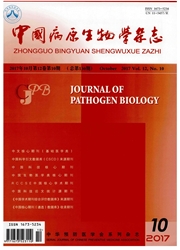

 中文摘要:
中文摘要:
CRISPR/Cas系统是细菌和古细菌在长期演化过程中形成的一种适应性免疫防御系统。Ⅱ型CRISPR/Cas系统经人工改造为由Cas9核酸酶和特异的sgRNA构成的新型靶向基因组编辑技术,即CRISPR/Cas9系统。与锌指核酸酶(ZFNs)、转录激活子样效应因子核酸酶(TALENs)相比,CRISPR/Cas9系统操作简单,花费低,编辑功能更强。本文综述了CRISPR/Cas9系统的基本结构、作用机制和应用进展,并对其应用前景进行了展望。
 英文摘要:
英文摘要:
CRISPR/Cas is an adaptive immune defense system that is formed as bacteria and archaea evolve over the long term.CRISPR/Cas9 is a novel technique for targeted genome engineering.Derived from the type II CRISPR/Cas nuclease system,CRISPR/Cas9 consists of specific sgRNA,which recognizes target nucleic acids via Watson-Crick base pairing,and cas9 nuclease,which cleaves target nucleic acids.Compared to previous targeted genome-editing techniques like ZFNs and TALENs,the CRISPR/Cas9 system has the advantages of easier manipulation,low cost,and enhanced editing capability.This review describes the genomic structure of the CRISPR/Cas system and this review summarizes its mechanism and recent advances in the use of CRISPR/Cas9 as well as prospects for its future use.
 同期刊论文项目
同期刊论文项目
 同项目期刊论文
同项目期刊论文
 Cellular immunogenicity of a multi-epitope peptide vaccine candidate based on hepatitis C virus NS5A
Cellular immunogenicity of a multi-epitope peptide vaccine candidate based on hepatitis C virus NS5A Establishment of a novel triple-transgenic mouse: conditionally and liver-specifically expressing he
Establishment of a novel triple-transgenic mouse: conditionally and liver-specifically expressing he 期刊信息
期刊信息
